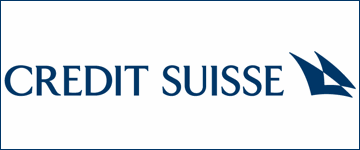A study undertaken by Conning alongside the American Council of Life Insurers (ACLI) found that life insurance companies could look to invest in alternative asset classes such as ILS as a way to add diversification, while reducing sensitivity to interest rates.
The study captured the concerns of 50 U.S. life insurance CEO’s who highlighted their primary concerns as the declining investment income and the need for capital appreciation that life insurance and reinsurance companies face.
In the current economic and financial climate life insurance and reinsurance businesses often struggle to maintain returns on their asset portfolios. At the same time there is a concern that life insurers strategies of allocating to traditional asset classes may not be working as well for them while interest rates remain low.
An additional study from insurance investment management firm Conning found that life insurers have been addressing their income needs by adding Triple-B corporate credit exposure and extending out the yield curve, despite declining risk premiums.
Connings study found that “An approach that focuses exclusively on adding Triple-B corporate credit may overlook other important investment considerations, including the need for diversification and proactive risk management.”
Due to the concern of life insurance CEO’s and the results of the study, Conning tasked its risk management team to look at how a life insurer could improve its approach to asset allocation and generate a better returns, while also diversifying.
Conning developed an efficient frontier analysis of a sample U.S. life insurer’s portfolio (including representative inputs and parameters) that showed how revising their approach to asset allocation, in order to include non-traditional and alternative asset classes, could improve their investment performance in terms of economic value at the same level of risk.
“The insurance industry, including life insurers, needs to consider a more holistic approach to enhancing portfolio performance,” commented Mike Haylon, Managing Director at Conning. “We strongly believe that companies that incorporate strategies involving diversification, expertise in alternative investing, and a comprehensive risk management approach can position themselves more strategically for growth in the current investment environment. Conversely, over-concentration in certain investment strategies is likely to weaken the outcome.”
The analysis undertaken looked at the economic value and risk (standard deviation of economic value) associated with changes to a portfolio. It considered the performance difference between a sample portfolio that included non-traditional and alternative asset classes not extensively used by life insurers and a portfolio that included only traditional asset classes over a five-year period.
Interestingly, Conning chose to include insurance-linked securities (ILS) (such as catastrophe bonds or collateralized reinsurance instruments), along with emerging market sovereign debt, master limited partnerships (MLP’s) and liquid alternatives, in the portfolio with the non-traditional component.
The results of the analysis shows that the life insurers portfolio containing non-traditional and alternative asset classes outperformed the portfolio focused on traditional assets and corporate credit exposure.

Impact of Alternative Assets (including ILS) on a Sample U.S. Life Insurer Portfolio - Source: Conning
“While life insurers will need to take a close look at their respective investment objectives and constraints, certain non-traditional asset classes such as those considered in this analysis can add further levels of diversification to portfolios, reduce sensitivity to higher interest rates, and enhance income and the potential for capital appreciation,” added Haylon.
Currently life insurance companies are not big investors in the catastrophe bond and ILS market, despite the natural catastrophe peril linked assets offering clear diversification for their traditional assets strategy as well as versus their underwriting portfolios.
There are issues regarding the way an ILS or cat bond investment would have its capital charge calculated for life insurers currently, which holds back the life sectors investments into the space.
A proposal was recently submitted to the NAIC hoping to make it easier for life insurers to utilise catastrophe bonds and ILS instruments as part of their investment portfolio. If steps can be taken to ensure that any capital charge also takes into account the diversification benefits of ILS and cat bonds, then life insurers may be able to add them to their portfolios and benefit from the improved performance that Conning’s study demonstrates is possible.
The Conning and ACLI study found:
- 77% of surveyed CEOs of life insurance companies indicated investment yield was of critical importance to maintain profitability.
- More than 80% of surveyed CEOs are diversifying portfolios beyond traditional fixed income assets as a strategy to drive investment yield and returns.
The Conning Insurance Research Study found:
 View all of our Artemis Live video interviews and subscribe to our podcast.
View all of our Artemis Live video interviews and subscribe to our podcast.
All of our Artemis Live insurance-linked securities (ILS), catastrophe bonds and reinsurance video content and video interviews can be accessed online.
Our Artemis Live podcast can be subscribed to using the typical podcast services providers, including Apple, Google, Spotify and more.
- Spreads between Triple-B bonds and treasuries have narrowed dramatically since the financial crisis, so much so that companies have been taking more risk every year, but are getting paid less to do so.
- The life insurance industry has less than 1% of invested assets in Emerging Market debt even though EM countries are contributing to over 50% of global GDP.
- When looking at government debt to GDP, debt in developed countries represents over 106% of GDP, whereas debt in emerging markets countries now represents 33% of GDP.
- Emerging markets debt credit ratings have been on a steady incline. According to Barclay’s Emerging Markets Debt Index, the weighted average rating of this asset class is now in the Triple-B.































